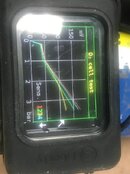The driver was Teledyne. Teledyne where the largest manufacturers of O2 cells, and had been designing and manufacturing cells for rebreathers for the Navies of the world.
They decided that the 'risk' [1] of supplying cells for the general consumer market was far to high. They switched to only supplying cells for the medical and military use. Which left all the CCR manufactures (and users) with a problem.
AP, like a number of other manufacturers where forced into the position that they need to produce their own cells. It was carnage as a number of companies attempted to learn how to produce cells, and scale up the manufacturing. During that period, some cells where only last one or two days before they failed.
I was buying cells from a number of suppliers. I have to say AP where the best in terms of support, occasionally shipping cells to the address where I would be for a week/weekends diving.




